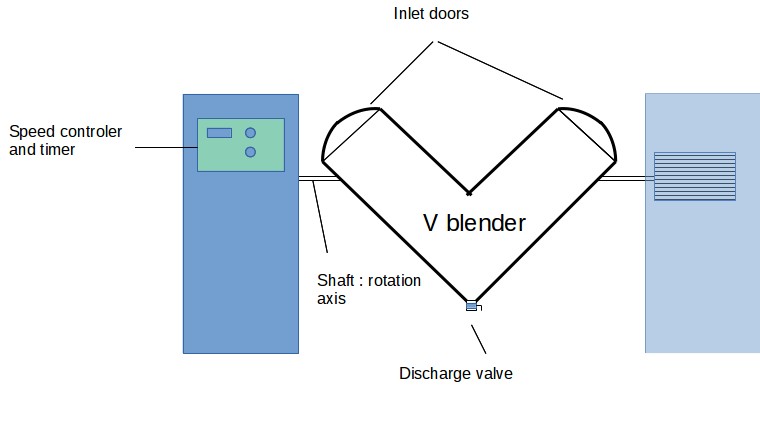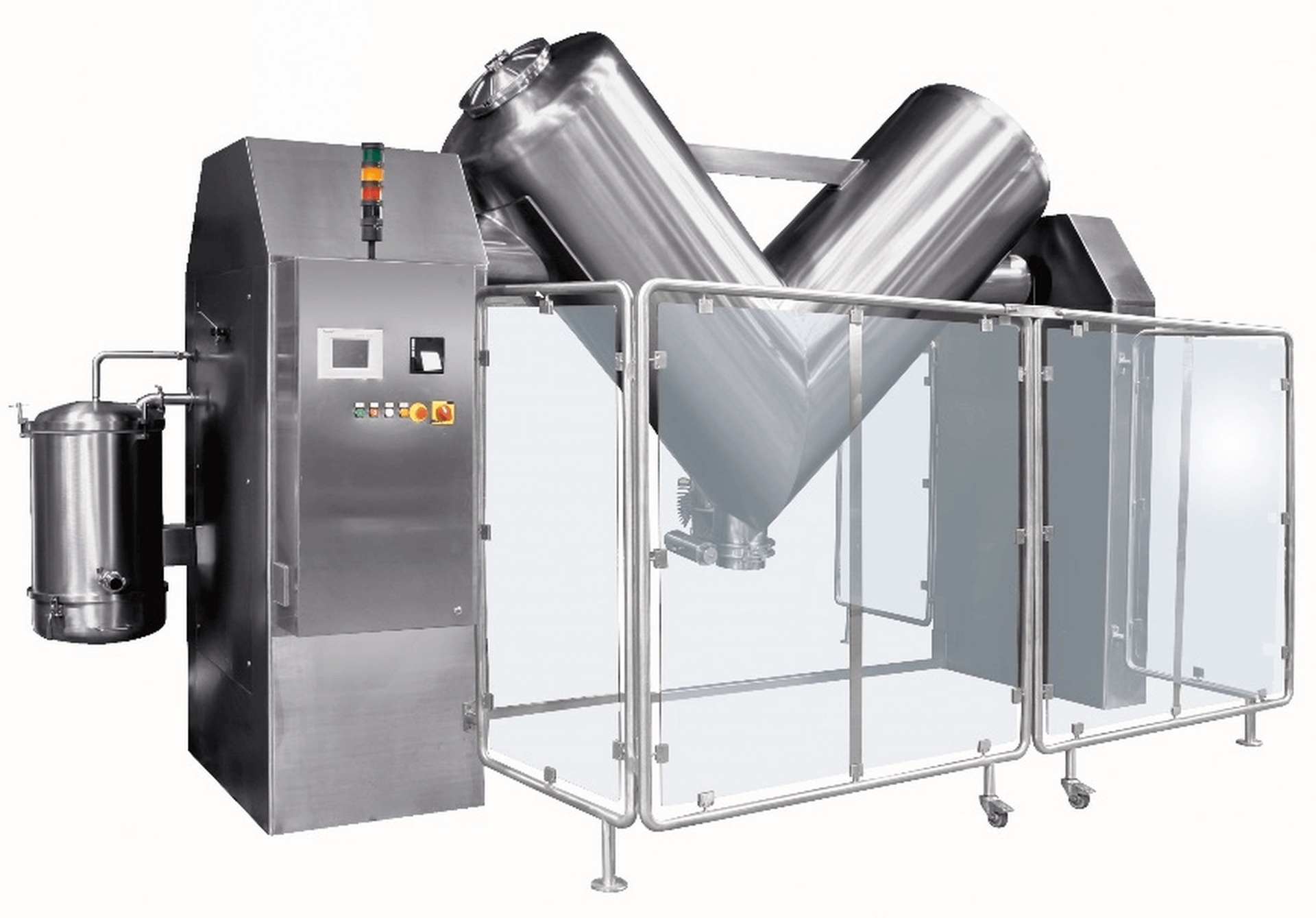V Cone Blender: The mixing occurs due to tumbling motion.

Construction of V Cone Blender
Table of Contents
It consists of an enclosed V-shaped vessel that prevents any foreign particle to enter into chamber. It is made of either stainless steel or transparent plastic. It consists of a horizontal shaft rotated about an axis causing the particles within the mixer to tumble over each other onto the mixture surface. The charging of material into the V-Blender is through either of the two ends. Batches from 20 kg to 1 tonne can be loaded for mixing depending upon the size of the equipment.
Working of V Cone Blender
The material is loaded into the blender. The recommended fill-up volume for the V-Blender is 50 to 60% of the total blender volume. On rotation, a tumbling motion occurs. When the V-Blender tumbles, the material divides and recombines continuously. The repetitive converging and diverging movement between the material and the blender results in homogenous blending. The product is collected from the bottom of V. Normal blend times are typically in the range of 5 to 15 minutes depending on the properties of a material to be blended.
Blender speed can also be key to mixing efficiency. At low speeds, shear forces are less. Although higher mixing speeds provide more shear, this can lead to greater dust resulting from the segregation of fines. There is also a critical speed that, if approached, will considerably reduce the mixing efficiency. As revolutions per minute increase, the centrifugal forces at the extreme points of the blender will exceed the gravitational forces required for mixing. As a result, the powder must tend to gravitate toward the outer walls of the blender casing. As the size of the blender increases, the rotational speed generally decreases in proportion to the peripheral speed of the blender extreme. V-Blenders are designed to operate between 50% and 80% of the critical speed.
Advantages of V Cone Blender
- V-Blenders are therefore preferred when precise blend formulations are required.
- They are also well suited for applications where some ingredients may be as low as five percent of the total blend size.
- Particle size reduction and attrition are minimized due to the lack of moving blades. Therefore, it can be used for fragile materials
- Loading and unloading of material is easy
- The absence of shaft projection reduces the chances of product contamination.
- Easy to clean
Disadvantage of V Cone Blender
- They require high headroom for installation and operation.
- They are not suitable for blending particles of different sizes and densities. There are chances of segregation of these particles at the time of discharge.
Pharmaceutical Applications of V Cone Blender
- V-Blenders are used for dry mixing. It provides efficient blending in a short time.
- This blender is often used for pharmaceuticals. But not suited for very soft powders or granules.
- V-Blenders are generally used for Food products, Milk powder, Dry flavors. Pesticides and Herbicides, Animal feed, Spice blends, Baby foods, and Cosmetics
Make sure you also check our other amazing Article on : Double Cone Blender
